Explainer
No audience without a website
An insight into the development of Gessnerallee's digital gateway.
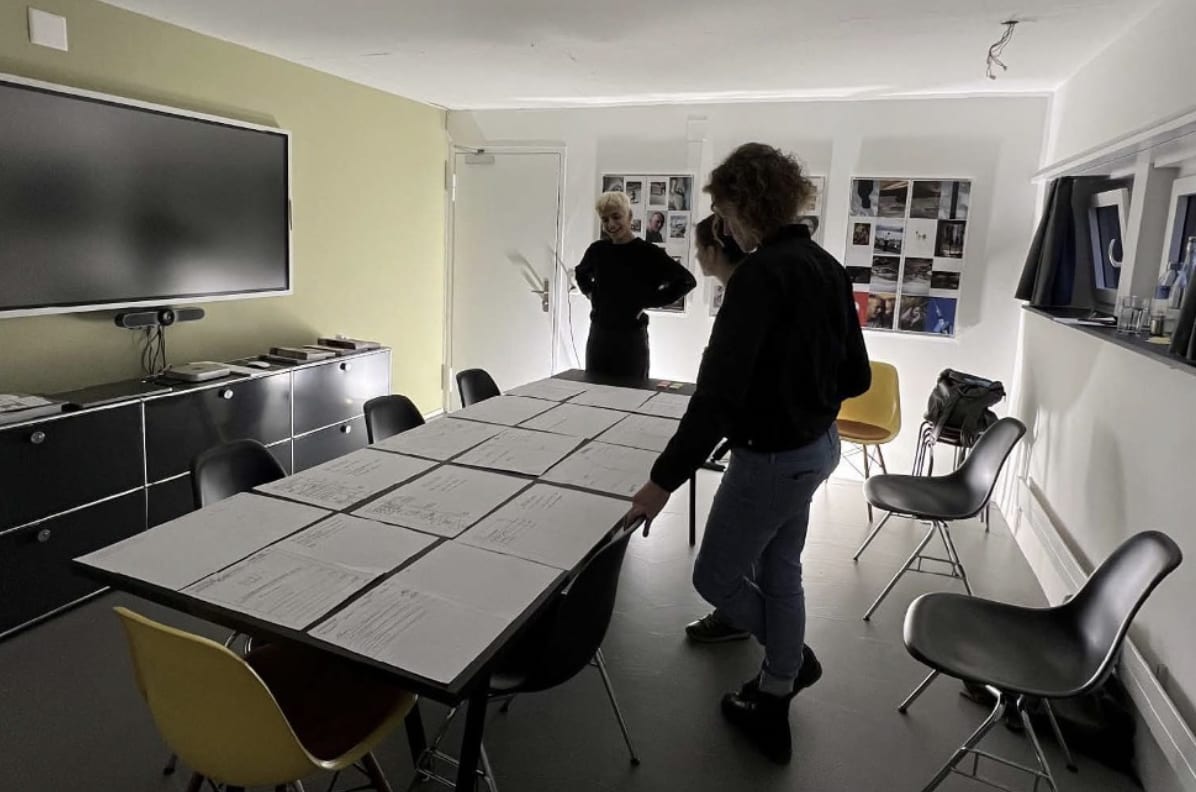
The Bodara graphic design studio has been working on the website design since last year. Copyright: Gessnerallee
How do we want to express ourselves communicatively and present ourselves to the public? We have been working intensively on this question since last autumn and our website is a central element in this process. This article gives you an insight into the individual steps taken from the first development of the website through to its construction and launch. We are sharing this information with you because we are interested in your opinion and would like to invite you to participate in the further development of the website.
What was most important to us
We wanted to try and think from the audience's perspective. After all, the digital presence only has an effect if the people who visit the website feel connected and can orientate themselves. That's why we carried out tests to gather feedback from different users and will continue to do so.
The design of the website is kept as clear and as clean as possible. Few distractions, few colours and just a few clicks to get there. Our most important concern being digital accessibility.
Nothing is perfect and the needs of users are constantly changing. The entire architecture is modular and dynamic in design so that we can respond to feedback over the coming years and continue to develop the website.
Design-Sprint
In December, we carried out what is known as a Design Sprint. The aim was to quickly create a prototype of the website. We didn't completely achieve this, but sketches had already been created that showed a clear direction and the central elements. From the first step of the Design Sprint to the prototype (or in our case: to several sketches), there were a few steps to go through.
First step: Lightning Demos
Gathering inspiration. What are particularly successful or unsuccessful examples of entire websites or individual elements? We kept looking at the website of the Theaterformen festival because of its level of digital accessibility, that of Battersea Arts Center because of its confident handling of the balancing act between programmed and non-programmed events and that of Hebbel am Ufer because we find its entire communication presence very successful. In addition to our research on the communicative presence of cultural institutions, we also looked at various publications. We had the impression that we could utilise some journalistic elements in terms of readability, interaction and orientation.
Second step: Start at the End
Identify and categorise the most important goals and risks.
1. design: clarity and functionality, digital accessibility
2. technology: simple management, unnoticeable loading time
3. audience: more resonance and more weekly letter readers
4. content and community: artist interaction, sharing content
5. sales: more online sales
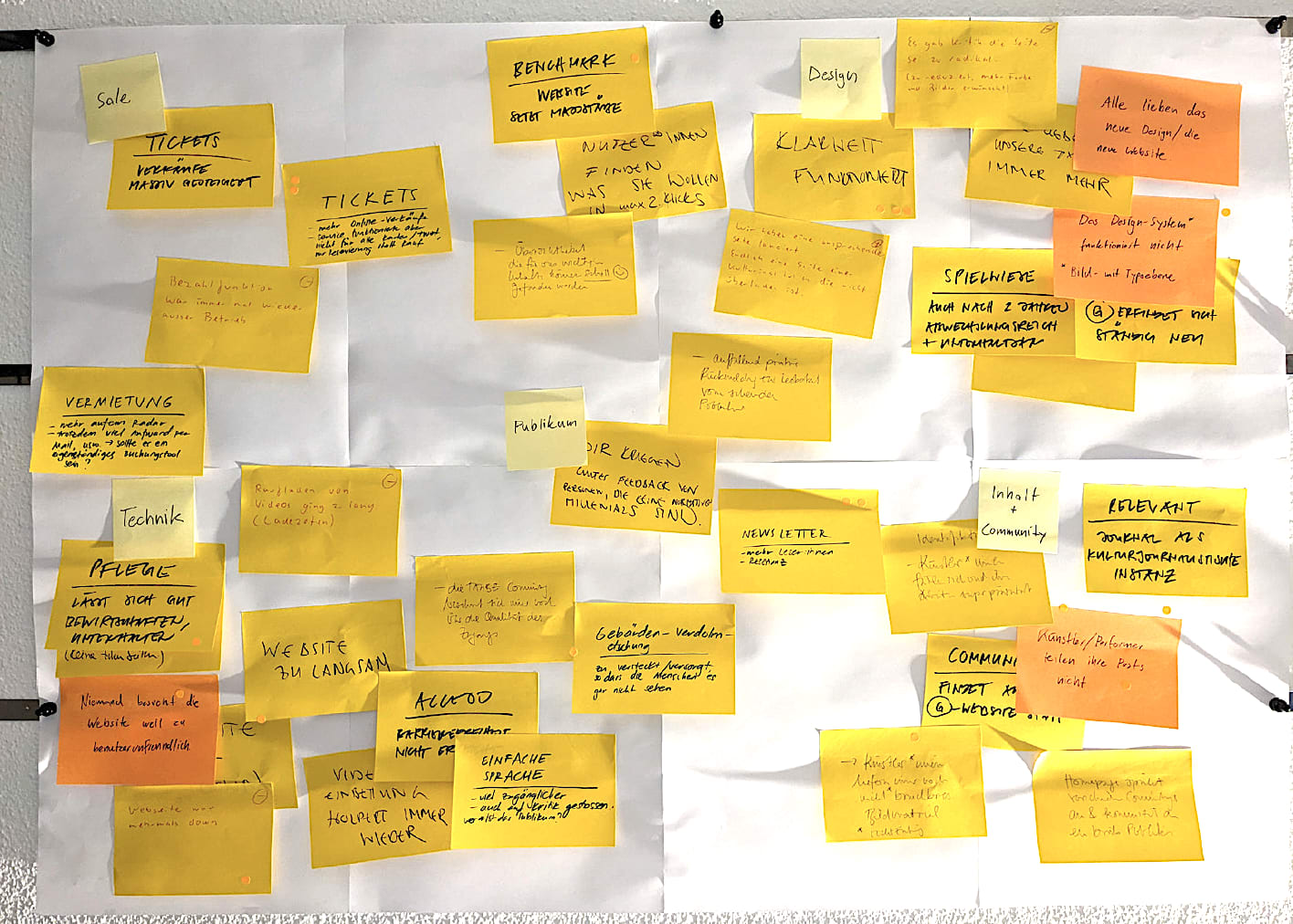
Start at the End: Identifying and categorising the most important goals and risks. Copyright: Gessnerallee
Third step: How Might We
Recognise fundamental questions, problems, opportunities and possibilities.
1. artists: Identification with the Gessnerallee, multipliers on social networks
2. content: What content is needed and why?
3. design: clarity and an agile structure that makes you want to know more
4. audience: reach users with little prior knowledge
5. technology: build a website as agile as possible
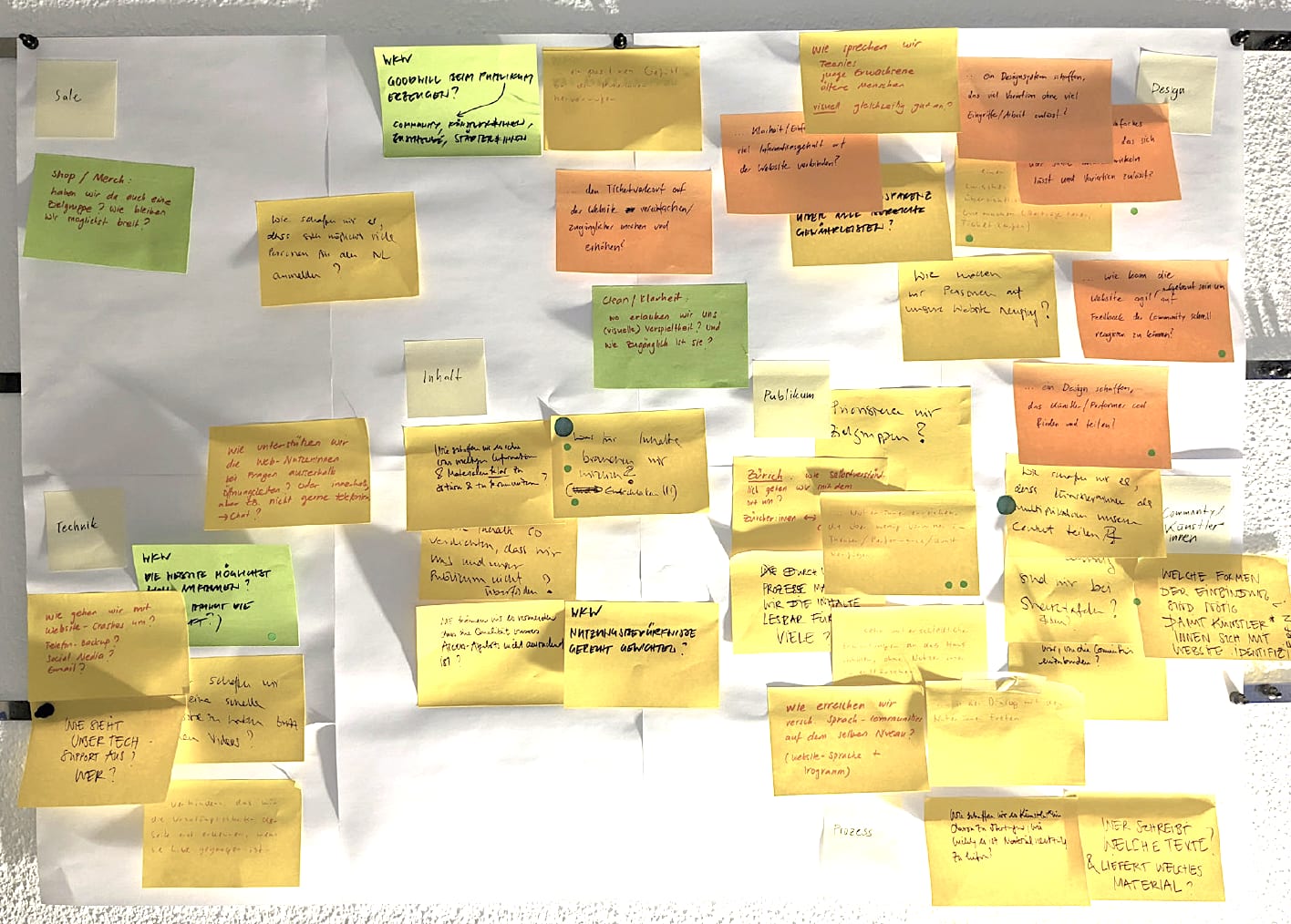
How Might We: Recognising fundamental questions, problems, opportunities and possibilities. Copyright: Gessnerallee
Fourth step: User journey mapping
Define target groups and determine the interaction between users and the website
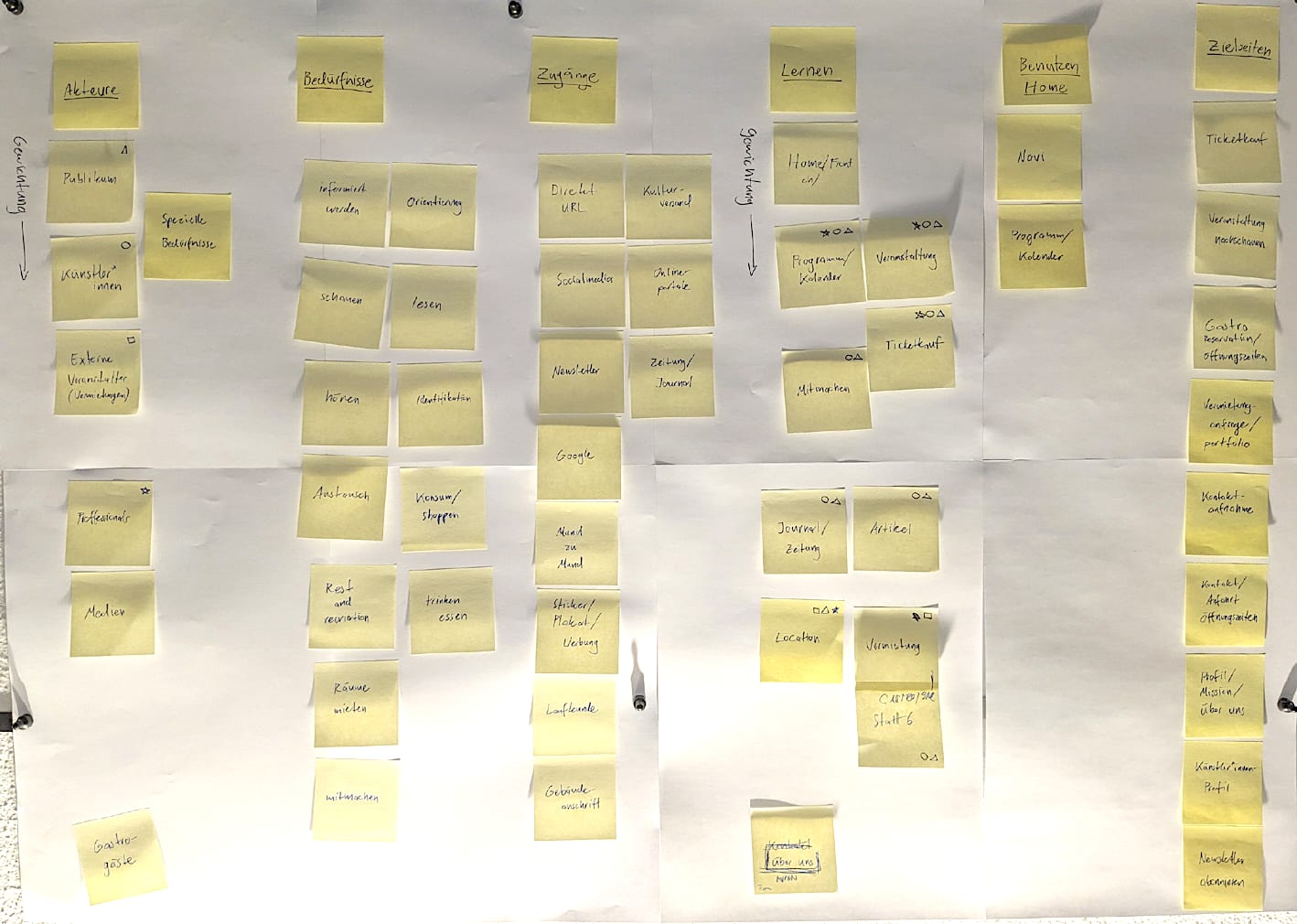
User Journey Mapping Defining target groups and defining the interaction between users and the website. Copyright: Gessnerallee
Fifth step: Solution Sketches
Create sketches for start pages and record important discoveries from the design sprint:
Wordmark top left
Element «Spotlight» (Element Important)
Weighted event(s)
Mobile first
Linear
«Disturber / call to action» for various issues (e.g. subscribe to a weekly newsletter, order newspaper, book aperitif, become a club member)
Share functionality (be able to share individual events and articles in the newspaper
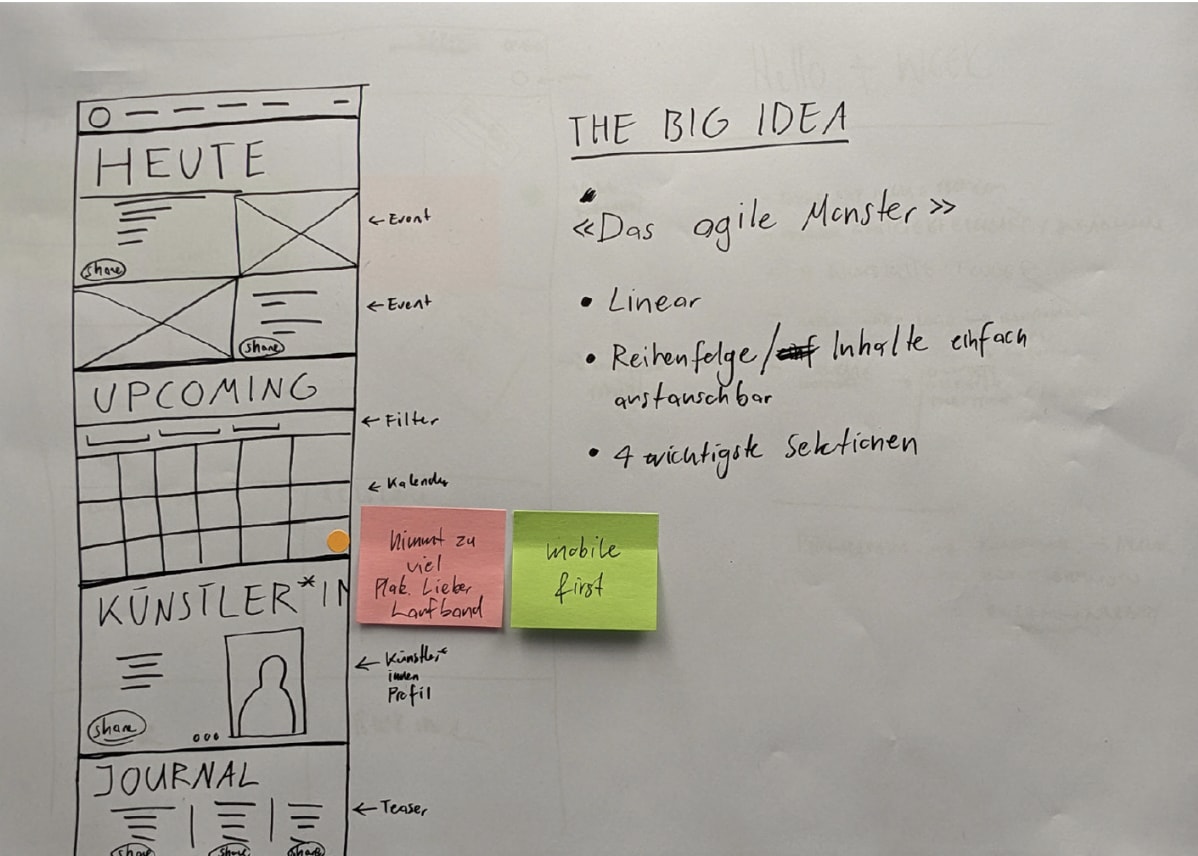
Solution Sketches as the fifth step. Copyright: Gessnerallee
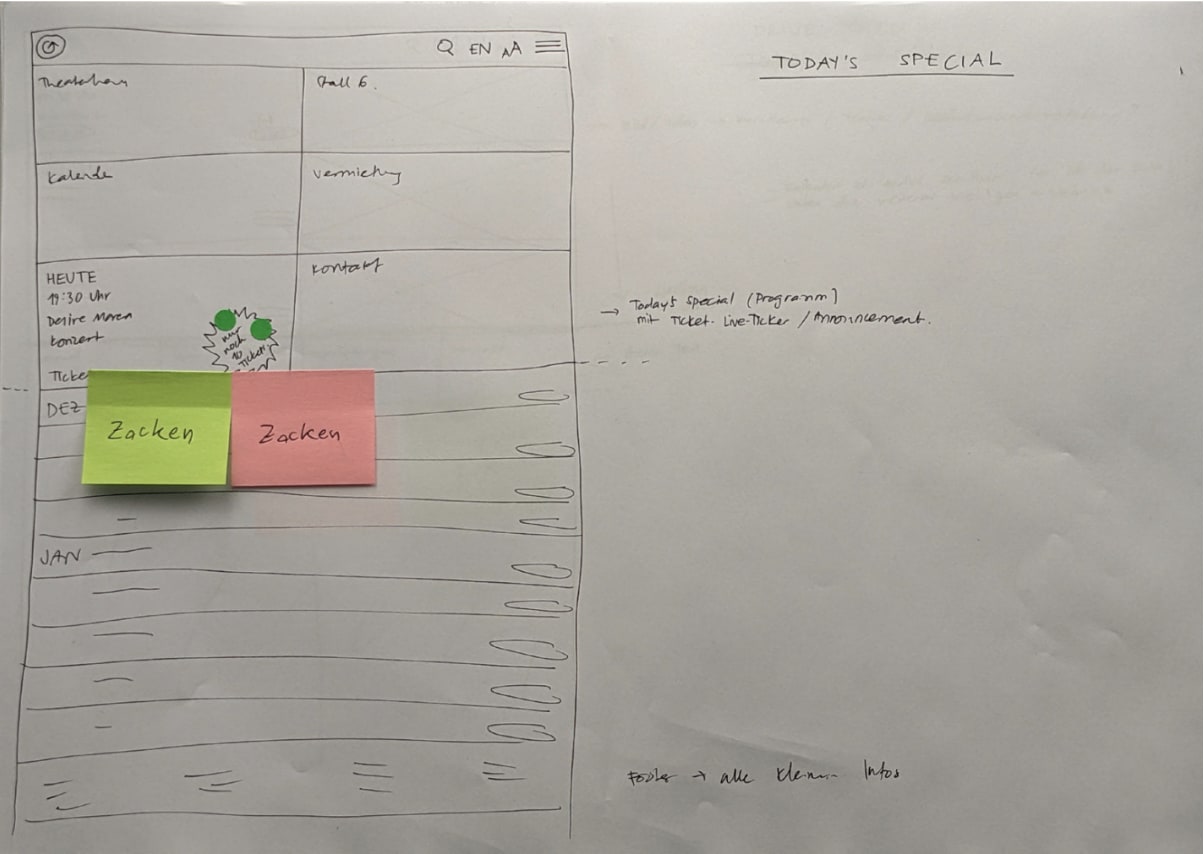
The aim was to create sketches for landingpages... / Copyright: Gessnerallee

...and capturing important take-aways from the design sprint. Copyright: Gessnerallee
Current implementation and structure of the homepage
Header
The header is at the top. On the far left you will find the word mark ‘Gessnerallee’. If you get lost on the website, you can return to the homepage by clicking on ‘Gessnerallee’. After the word mark on the right is a symbol that stands for accessibility. Click here to change the settings for the entire website. For example, you can switch to dark mode, change the website to plain language and, quite uniquely so far, change the entire font of the website. Right next to it, you can switch to English. And at the end you will find the ‘burger’, the menu.
Six tiles
The tiles summarise the possible uses of the Gessnerallee for you. Depending on what you are interested in, the tiles will take you to the relevant information as quickly as possible.
Event teasers
This is where we place events that we would like to draw your attention to in particular.
Programme
This is our calendar. Here you will find all public events at Gessnerallee in chronological order.
Important
On these Post-it-like rectangles you will find relevant information such as announcements, vacancies and information about Gessnerallee or the programme.
Newspaper
Here you will find selected articles from our newspaper that we consider relevant at the given time.
Footer
The footer behaves like the header. Here you will always find information about travel and tickets, you can sign up for our weekly newsletter and you can go directly to our social media channels. It also contains information on data protection and our legal notice.
People Involved
The structure and design of the website were conceptualised in close collaboration between Rahel Bains (Communications) and Kathrin Veser and Miriam Walther (Management) from the Gessnerallee and Dominique Schmitz, Helene Leuzinger and Tobias Peier from the Bodara graphic design studio. The website was programmed by Zoe Küttel (project management) and Oguz Han Asnaz and Timon van den Nobelen (development team) from the Novu agency.
Next Steps
Today we launched the website version 1.0. Over the next few days, the main focus will be on adding things that have been forgotten, correcting errors of all kinds and incorporating functions that have been postponed until after the launch.
In a continuous process, we will continue to develop the website based on your feedback. In September and October, experts from Sensibility (link), among others, will test the website for accessibility. This step is part of the Canton and City of Zurich's Cultural Participation transformation project, for which the Gessnerallee has received specific funding. The next launch is already planned for November to implement improvements and add new features.
Now it's your turn. What is your first impression?
Please let us know how useful our website is for you, which functions you find helpful and which you don't and of any wishes you have for further development by writing to Rahel Bains at: bains@gessnerallee.ch.
More articles
New newspaper edition, winter break and New Year
17 December 2025
From Team Gessnerallee
An edition full of role models. Weekly letter #62 Read


New newspaper edition, winter break and New Year
17 December 2025
From Team Gessnerallee
An edition full of role models. Weekly letter #62 Read
(In)visibility
10 December 2025
From Rahel Bains, Kathrin Veser and Miriam Walther
The sixth edition of our newspaper is here. An edition full of role models. Read

Afterglow is good, anticipation is even better
10 December 2025
From Team Gessnerallee
Why it's far from over in the independent scene after 50, but on the contrary can be really enjoyable. Weekly letter #61 Read